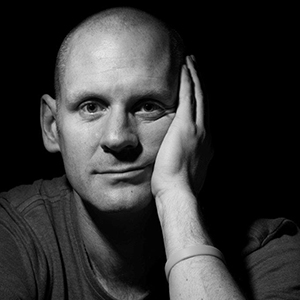My name is Colin Campbell and I come from Scotland. I live and work in England and have a successful multi-disciplinary specialist dental practice and teaching facility in Nottingham, but most importantly I am from Scotland.
On Thursday, November 12, 2020 the Scotland national football team overcame Serbia in a penalty shootout 5-4 to qualify for the European football championships in 2021. This is the first time that Scotland have qualified for a major championship in 23 years. While this short piece of writing is designed to inspire and encourage you to build a successful dental team, I’d like to examine how Scotland were able to turn around their fortunes of 23 years using essentially the same talent pool and facilities as they had had for nearly 2.5 decades by changing team spirit and attitude.
For those of us who work within dentistry and aspire to building and leading teams to construct better businesses, to look after our patients exceptionally and to have a fulfilling life, the task can seem daunting and it will feel almost impossible as to where to start. Such must have been the case for Steve Clarke, who took on the job as the coach of the Scotland team in the worst possible position following the worst run of results that Scotland could ever remember over a long period of time. All Steve Clarke did is all that we should do, which is to start at the beginning and try to build from there.
Professional football players get paid relatively little to play for their national teams (particularly in Scotland). This ties in with the fact that over a certain level; income becomes almost irrelevant to your dental team. Countless studies and explorations into the role of income in satisfaction at work have shown this, and income level is often fourth or fifth in the list of things most important behind leadership and culture.
Building a culture is what builds a team and building a brand is what builds a culture.
Building a brand begins with ‘why’, followed by the creation of a vision which is distilled down to the creation of a mission that ultimately can be used to construct goals to move towards the mission within the vision to fulfill the ‘why’. At The Campbell Clinic we constructed our ‘why’ many years ago and it has never changed. Our vision remains the same but our mission will alter over time and our goals will change regularly. And as we work together to achieve these, the team becomes stronger and the culture becomes more deeply embedded.

It seems the same is happening to the Scotland football team under the leadership of Steve Clarke. On Thursday November 12, they were able to pull themselves back from the worst setback – an equalizing goal in the 90th minute – and to hold out on the backfoot during extra time to win on penalties.
The first stage in building a better team is to start with ‘why’.
For all of us it is essential to know why we turn up to work and what it is we would like to achieve. As an example of this, The Campbell Clinic why is as follows:
“The Campbell Clinic exists to positively improve the lives of as many people as possible through the work we do and the example we set.”
- The ‘why’ of your business should be generic because your business may change over time and if it is your goal for your business to last for a long time, this must be understood.
- The ‘why’ can come from the founder or the owner or can be constructed in collaboration with the team (this is always the best way), so that everyone feels involved and invested.
Once the ‘why’ has been constructed and agreed it should be displayed as widely as possible on websites, signs, even on uniforms. This can then be used to construct the vision, the idea or the picture of where the organization will be 5 years from now, taking into consideration political, environmental, social, technological, financial as well as many other possible factors. Team morale builds when the whole team is involved in these discussions and deliberations in an engaged way.
Once the vision is achieved, the mission (the roadmap) towards the vision can be constructed and this can then be broken down into manageable chunks to provide goals over short terms for every member of the team. Once everyone has their goals, they can work towards these, watching the business grow, watching the goals become the mission and the mission head towards the vision and the vision produce the ‘why’.
This becomes an ever-larger circle of completion. This is what branding means, this is what branding is.
A brand is not a fancy logo designed by the boss that is stuck on the side of his/her car. A brand is a feeling, a brand is an emotion, a brand is a link to something more important.
As the Scotland players were interviewed following this historic game for their country on the November 12, many of them cried. Many of them touched the badge on their chest which represented the brand of the football team. The leader, coach Steve Clarke, spoke quietly and softly about what had happened and the things that needed to happen next to continue the journey that they were on – their vision.
Building a team in any area is a privilege that involves hard work, mental strength and resilience but provides rewards that go beyond the financial.






